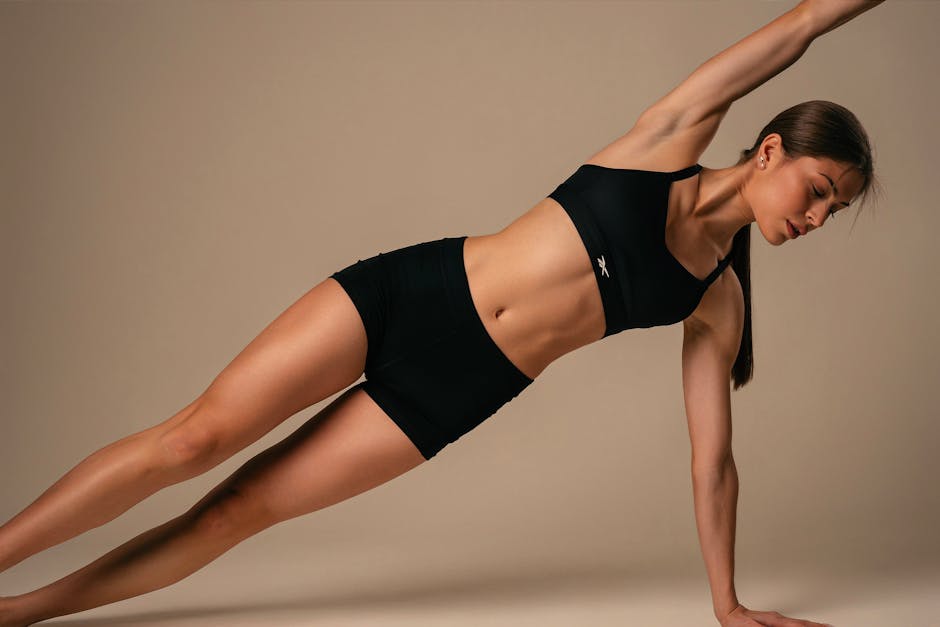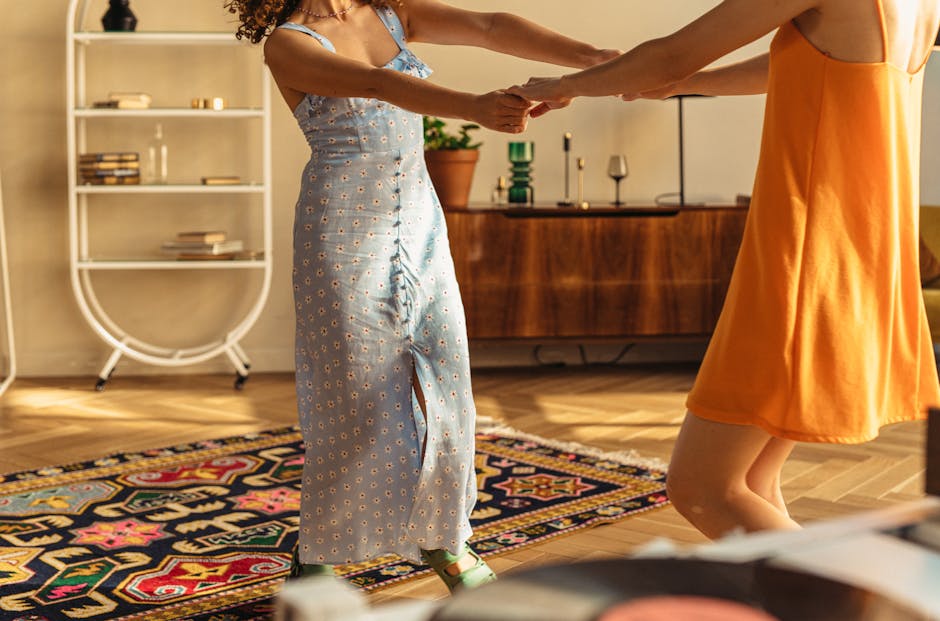Fitness Through the Centuries: Ancient Wisdom Meets Modern Routines
As we leap into the ever-evolving world of fitness and workout routines, it’s fascinating to see how ancient philosophies have shaped our modern understanding of mind-body harmony. Have you ever wondered how practices that thrived thousands of years ago continue to resonate in the gyms and yoga studios of today? Delving into the past not only enriches our fitness regimens, but it also fosters a deeper connection to our bodies and our movements. Join me as we explore the intriguing journey of fitness through the centuries and uncover the timeless wisdom that influences our contemporary workouts.
The Roots of Fitness: Ancient Exercise Practices

Long before the era of high-tech gyms and specialized fitness classes, our ancestors understood the importance of physical activity, not just for survival, but as a means to achieve balance and wellness. Cultures such as the Greeks, Chinese, and Indians embraced structured exercise routines that were rooted in philosophical beliefs about the body and mind.
Greek Influence: The Birth of Gymnastics and Balance

The ancient Greeks laid the groundwork for modern athleticism with their emphasis on physical fitness as a pathway to virtue. Gymnastics, derived from the Greek word "gymnos," meaning "naked," was initially a practice focused on developing physical prowess among males, encouraging the harmonization of body and spirit. This principle of balance is echoed today in functional training, where exercises simulate daily activities to improve overall performance and prevent injury.
Furthermore, the Greeks held athletic competitions such as the Olympics and the Pythian Games, where physical excellence was not merely a spectacle, but a divine form of worship. Similar philosophies still prevail; finding balance through training is a common theme in contemporary fitness principles.
Eastern Wisdom: Yoga’s Enduring Legacy

Similarly, ancient Eastern practices, notably yoga, have blossomed into a global phenomenon renowned for promoting both physical fitness and emotional wellbeing. Rooted in Hinduism and Buddhism, yoga emphasizes the significance of breath control (pranayama) and meditation as intertwined elements of physical exercise.
Today, incorporating mindfulness into workout routines is being embraced more widely, exhibiting a modern understanding that productivity in fitness comes from not only physical exertion but also mental tranquility. Resources like Movement Meditation reflect this blend of mind and body practices that reflect the philosophy of yoga, aiming to foster a sense of harmony in our fast-paced world.
Insights from the Ages: Bridging Past and Present

When exploring the ancient attitudes toward fitness, it’s vital to understand how these philosophies weave into today’s practices. Whether it’s interval training borrowed from historical military fitness, or the emphasis on communal exercise in Indigenous cultures, the essence of physical activity remains consistent: it improves health and fosters unity and connection.
From Ancient Disciplines to Modernity: Embracing Diverse Routines

In our global society, diverse daily routines echo the ancient approaches to fitness. Dance, for example, has roots in several cultures as a form of expression and movement. The modern concept of dance-inspired workouts taps into this legacy, drawing from various global practices.
For a creative take on how dance influences fitness, check out Dance Your Way to Fit, which celebrates the world’s rhythms and encouragement of various cultural styles in fitness.
The Role of Community: Exercise as Collective Experience

Historically, exercise was often a collective endeavor. From hunting parties to group rituals, communities thrived on shared physical activity. This concept has made a resurgence in community-based workouts, enabling individuals to bond while striving for personal fitness goals. It encapsulates the insight that body movement can indeed be a powerful facilitator of human connection.
Moreover, the vibrancy of online fitness communities allows individuals to gather, support, and share their fitness journeys. These platforms reflect ancient communal practices where individuals uplift each other, embodying the age-old principle that together we can achieve more.
The Science Behind the Ancient Wisdom: Mind-Body Connection

Throughout history, awareness of the body's responsiveness to movement has driven the evolution of fitness philosophies. Today, we understand that our mental state directly impacts physical performance. Ancient cultures recognized this connection intuitively—even if they didn’t have contemporary neuroscience to back it up.
Physiological Factors: Emotional Endurance

It’s no secret that our emotions can influence physical performance. Psychological studies reveal that emotional state can greatly impact workout efficiency and outcomes. For instance, high motivation boosts performance levels, conducting a harmony between emotion and workout success.
Incorporate strategies for improving your emotional endurance into your routine, leveraging music as a motivational tool. Unlocking the power of sound to transform your workout can create an uplifting atmosphere. Check out The Beat of Your Workout to explore how different genres can influence your training sessions.
Breath Control: The Link Between Body and Mind

Breathwork is another ancient practice that has seen a revival, forming a foundational element of numerous fitness routines. Eastern traditions often emphasize breath as an entryway to achieving deeper meditation and physical presence, shaping how modern workouts are perceived. Practices such as Pranayama in yoga inform how athletes condition their breath to enhance performance—techniques implemented by individuals today to gain competitive advantages in various sports.
A deeper exploration of breath and movement can be uncovered through Mindful Movement, merging ancient concepts with present techniques.
The 21st Century Fitness Revolution: A Fusion of Techniques

As fitness trends continue to evolve, a fascinating blend of traditional exercises with modern science leads us to innovative techniques. Ancient philosophies serve as the backbone of many contemporary workout practices.
The Rise of Holistic Fitness Approaches

The future of fitness is curating a well-rounded approach to bodily movement, encompassing physical, emotional, and even spiritual aspects of health. Functional fitness is one such approach, drawing on disciplines such as Pilates and martial arts, where efficiency in movement is prioritized. This holistic understanding parallels the ancient wisdom of achieving balance through purposeful activity.
Adapting Ancient Methods to Modern Routines

Coming up with creative workout ideas can draw inspiration from the past. Don’t be afraid to incorporate ancient wisdom into your workout routines through improvisation. For example, utilizing everyday objects in workouts can honor the resourcefulness seen in ancient practices. The article Fitness Alchemy elaborates on how things like chairs and water bottles can be transformed into workout tools, merging efficiency with creativity.
Gamification Phenomenon: Performance Meets Fun

Incorporating gaming elements into fitness is an identifiable trend that caters to the human desire for achievement and novelty. Interacting with workouts through game-like challenges amplifies motivation and engagement—reflecting primal instincts of competition seen in ancient societies.
For examples of how to establish motivation through play, visit Gamify Your Gains to explore the endless possibilities of injecting fun into fitness.
Next Steps: Embracing the Fusion of Ancient and Modern
Understanding the relationship between our historical fitness roots and how these ideals manifest in various workout strategies today opens a new pathway to enhancing our fitness journeys. By recognizing the wisdom of the past, we can create personalized workout routines that enrich not only our physical health but our emotional and spiritual well-being.
Personalizing Your Fitness Journey
As we reshape our approach to fitness, consider which ancient practices resonate most with you. Think about how mindfulness, communal interactions, or expressive dance can be integrated into your daily routine. Trust your body and engage in what feels enriching.
Setting Goals for a Balanced Workout Approach
Taking elements from both the ancient and modern trenches can create a supportive, well-rounded fitness plan. Set achievable goals that emphasize balance between strength, flexibility, coordination, and breath, allowing you to maintain enthusiasm as you work toward overall health.
Continuous Learning
Fitness is ever-changing, and so is our understanding of holistic health. Stay curious and engage with research, attend workshops, or join communities centered around fitness and wellness. This spirit of inquiry pays homage to the inquisitive thinkers of the past who sought understanding through observation and practice.
Final Thoughts
Bringing ancient philosophies into contemporary fitness enriches our journey towards health and fulfillment. By embracing the mind-body connection, we not only work on our bodies but cultivate a deeper, more harmonious relationship with ourselves. The lessons from fitness through the centuries remind us that movement is not just a pathway to health—it's an invaluable component of our shared human experience. So, as you lace up your sneakers or roll out your yoga mat, reflect on the wisdom of past generations, letting it guide you toward a holistic fitness journey that feels authentic and transformative.




